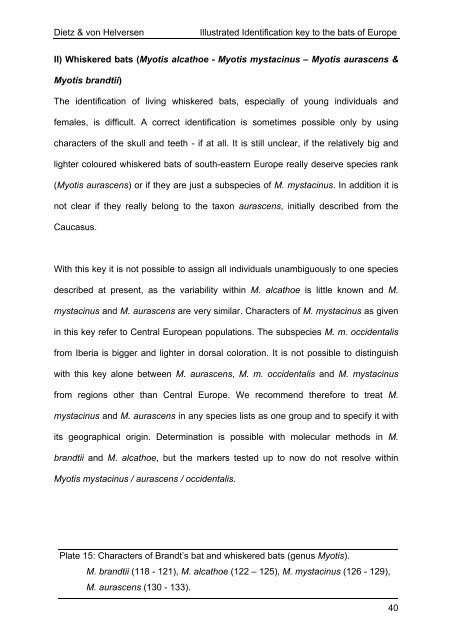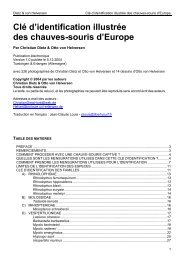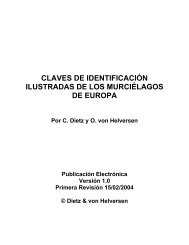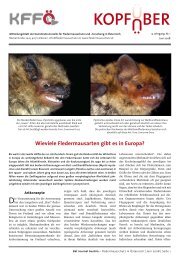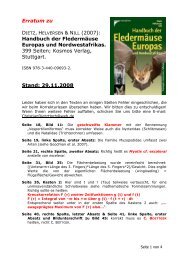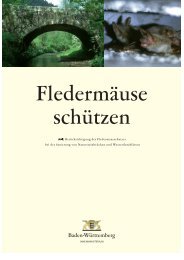Dietz & von Helversen Illustrated Identification key to the bats of ...
Dietz & von Helversen Illustrated Identification key to the bats of ...
Dietz & von Helversen Illustrated Identification key to the bats of ...
You also want an ePaper? Increase the reach of your titles
YUMPU automatically turns print PDFs into web optimized ePapers that Google loves.
<strong>Dietz</strong> & <strong>von</strong> <strong>Helversen</strong><strong>Illustrated</strong> <strong>Identification</strong> <strong>key</strong> <strong>to</strong> <strong>the</strong> <strong>bats</strong> <strong>of</strong> EuropeII) Whiskered <strong>bats</strong> (Myotis alcathoe - Myotis mystacinus – Myotis aurascens &Myotis brandtii)The identification <strong>of</strong> living whiskered <strong>bats</strong>, especially <strong>of</strong> young individuals andfemales, is difficult. A correct identification is sometimes possible only by usingcharacters <strong>of</strong> <strong>the</strong> skull and teeth - if at all. It is still unclear, if <strong>the</strong> relatively big andlighter coloured whiskered <strong>bats</strong> <strong>of</strong> south-eastern Europe really deserve species rank(Myotis aurascens) or if <strong>the</strong>y are just a subspecies <strong>of</strong> M. mystacinus. In addition it isnot clear if <strong>the</strong>y really belong <strong>to</strong> <strong>the</strong> taxon aurascens, initially described from <strong>the</strong>Caucasus.With this <strong>key</strong> it is not possible <strong>to</strong> assign all individuals unambiguously <strong>to</strong> one speciesdescribed at present, as <strong>the</strong> variability within M. alcathoe is little known and M.mystacinus and M. aurascens are very similar. Characters <strong>of</strong> M. mystacinus as givenin this <strong>key</strong> refer <strong>to</strong> Central European populations. The subspecies M. m. occidentalisfrom Iberia is bigger and lighter in dorsal coloration. It is not possible <strong>to</strong> distinguishwith this <strong>key</strong> alone between M. aurascens, M. m. occidentalis and M. mystacinusfrom regions o<strong>the</strong>r than Central Europe. We recommend <strong>the</strong>refore <strong>to</strong> treat M.mystacinus and M. aurascens in any species lists as one group and <strong>to</strong> specify it withits geographical origin. Determination is possible with molecular methods in M.brandtii and M. alcathoe, but <strong>the</strong> markers tested up <strong>to</strong> now do not resolve withinMyotis mystacinus / aurascens / occidentalis.Plate 15: Characters <strong>of</strong> Brandt’s bat and whiskered <strong>bats</strong> (genus Myotis).M. brandtii (118 - 121), M. alcathoe (122 – 125), M. mystacinus (126 - 129),M. aurascens (130 - 133).40


